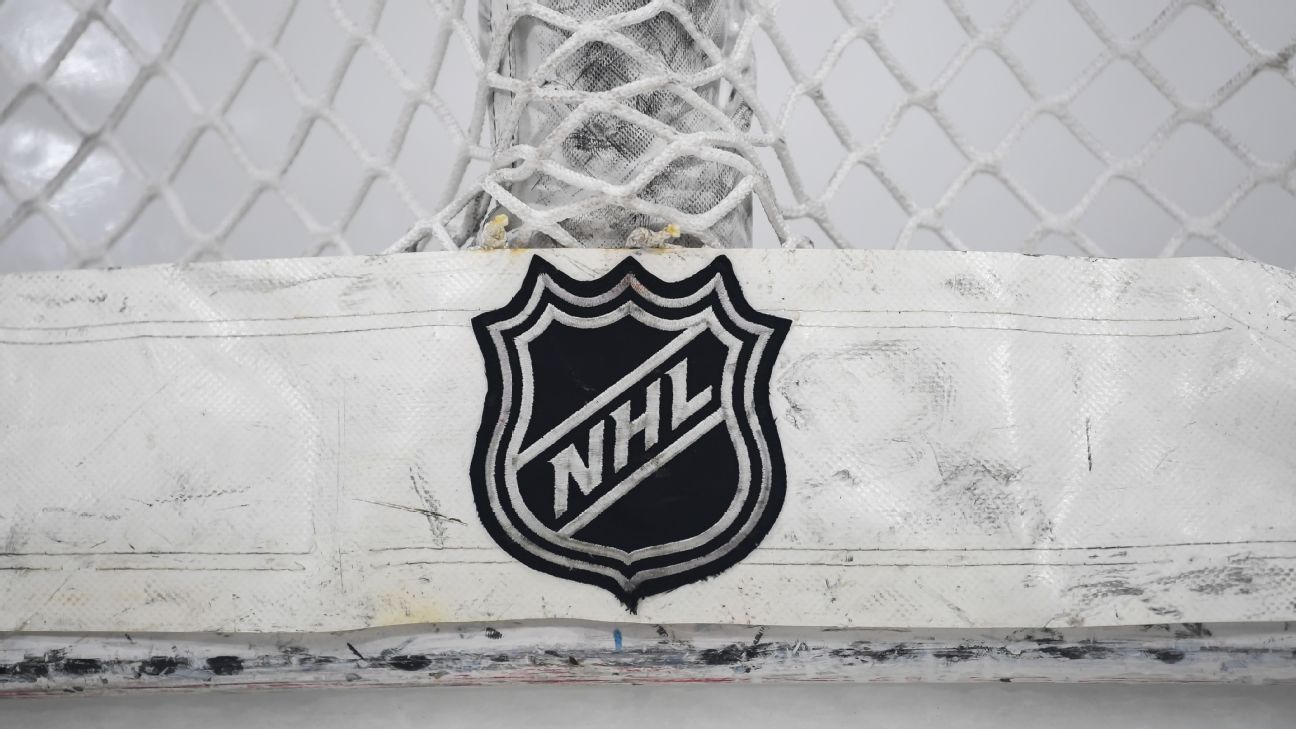The NHL has dropped Jogmo World Corp. as a primary technology partner in its player and puck tracking plans, but vows to have the highly anticipated data collection system up and running by the 2020 Stanley Cup Playoffs.
“We’re in the process of making a switch,” NHL commissioner Gary Bettman told ESPN on Thursday. “Jogmo had some organizational and financial challenges which we were concerned about at the offset, but actually came to fruition. We have a new partner who can do it and we’re very confident that that hasn’t slowed us down.”
A league source said that technology company SMT is the league’s new partner.
Jogmo had worked to develop a system that would allow the league to collect millions of datapoints for every game played through sensors placed on the players and inside the puck, as well as using in-arena antennas. It handled the tech side, while Germany’s Fraunhofer Institute had developed the hardware.
Bettman said the change in partners won’t derail the NHL’s plans to get puck and player tracking ready for the 2019-20 postseason. Full rollout won’t happen until 2021, according to Keith Wachtel, Executive Vice President & Chief Revenue Officer for the NHL.
“We believe we’ll be up and running for the playoffs. Maybe we could be up and running sooner, but we want to set expectations because it’s complicated — obviously it’s taken a long time. Getting it set up in 31 buildings, none of which are identical, and it has to work perfectly. And it has to work perfectly at the same time,” Bettman said. “My belief is, based off everything I’m being told, is that we’ll be up and running for the playoffs. That doesn’t mean we won’t use it, for example at the All-Star Game, but it’s the scalability and fine tuning of it, to make sure it does what it’s supposed to do.”
The NHL has made its puck and player tracking technology a significant priority. Its television partners will integrate the data and real-time visualizations into broadcasts, having already experimented with it at previous NHL events. Teams will be able to collect more accurate player data and stats. But most importantly, the tracking technology promised to usher in a new era of wagering on NHL games, both for amusement and for actual dollars as the legalization of sports betting continues to spread.
The NHL has already cut data exclusivity deals with MGM Grand, Fan Duel and William Hill in anticipation of player tracking. Any delays or hiccups in implementation could affect that next step.
“You leave yourself a lot of runway for this. We’ve been meeting with numerous technology companies for the last few years — anyone that’s in that business of optical and hardware-based solutions. So you have options, and we always want to leave them open if issues like that should arise,” said Wachtel. “The strategy that we have for all these technologies is two to three years out. I think you make sure you have other options and opportunities, and that’s what the commissioner and the owners expect with us.”
After working with several partners in an attempt to develop player and puck tracking systems, the NHL partnered with Fraunhofer Institute to create a puck that could house the tech. It also had a freezer that stores the puck, charges it, tests its battery life and signal strength. They built a machine that has a mechanical arm with a syringe that pumps the ideal amount of adhesive to seal it, and then applies 10 tons of pressure.
Jogmo World Corp. partnered with Fraunhofer to create the technology used in player and puck tracking. The initial plan featured 14 antennas placed around the arena, with sensors inside the puck allowing it to be tracked over 2,000 times per second. The technology was tested at the 2018 and 2019 NHL All-Star Games, and at regular season games in arenas like T-Mobile in Las Vegas and the Prudential Center in Newark.
Earlier this year, the NHL announced it would be using a hybrid system of both the sensor tracking developed by Jogmo and optical tracking, which relies on cameras around the rink.
“We’re convinced that the best solution for us is a two-system tracking system: a sensor-based system that will give us X-Y-Z coordinates for the players and the pucks, and an optical system that will give stick position, body position and limb recognition that we can add to the X-Y and X-Y-Z coordinates to get the full data,” said David Lehanski, the NHL’s senior vice president of business development.
“If the tests go well, we’ll be looking to add that optical component at some time next season. It may not be exactly aligned with the rollout of the [sensor] system, but ideally at some point next season.”
The move was seen as a peculiar one given the NHL’s previous concerns with that technology. While it’s been effective in sports like tennis, the amount of obstructed views during a fast-paced hockey game make it ineffective. The hope was that when partnered with the sensor technology, it could present a full picture of game action.
That hybrid version of puck and player tracking is what the NHL still intends to roll out after splitting with Jogmo. Wachtel said there are “no concerns” that it will arrive in the near future.
